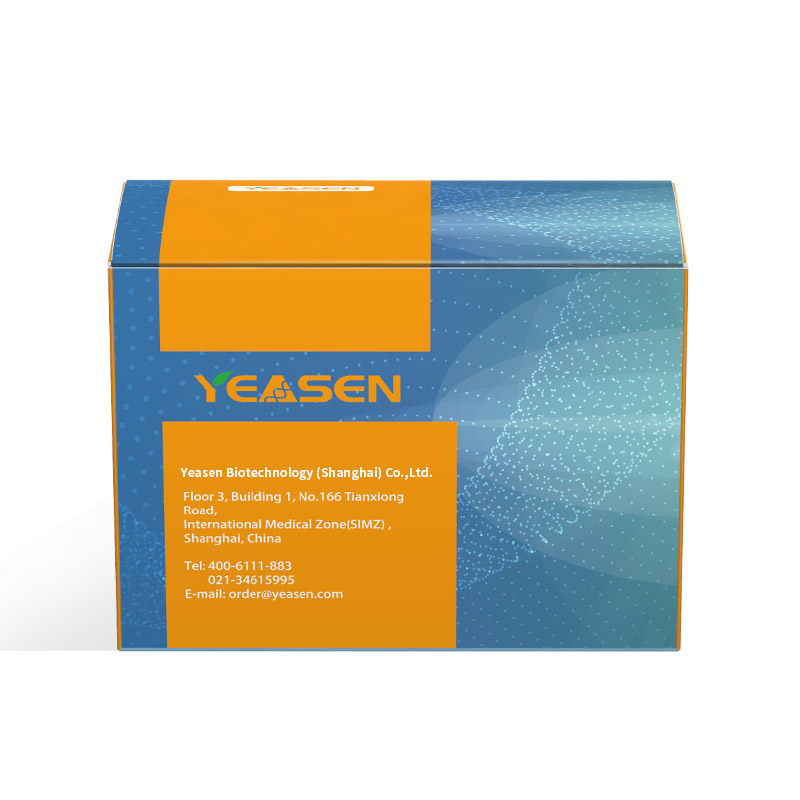RT-LAMP pH Sensitive Dyestuff Kit
Product Description
This product integrates LAMP dye into the buffer, including pH sensitive indicator and Bst Plus DNA Polymerase amplification components sunch as dATP, dCTP, dGTP and dUTP. This kit contains Bst Plus DNA Polymerase (glycerol-free), UDGase, RT enzyme, etc., and can be used for the preparation of lyophilization reaction system. At the same time, the kit reduces the sample addition operation, the operation error and suppresses the false positive reaction to a great extent, and improves the detection accuracy. While reducing the dosing operation, reducing the operation error greatly inhibits the false positive reaction and improves the accuracy of the test. This kit has high amplification efficiency and sensitivity and the amplification results can be judged by the eye, the positive reaction pores of which are orange-yellow, and the negative reaction pores are magenta.
Product Component
|
Component Number |
Components |
Cat#/Size |
||
|
13906ES65 (100 T) |
13906ES80 (1,000 T) |
13906ES92 (10,000 T) |
||
|
13906-A |
2.5× pH Sensitive Reation Buffer |
1 mL |
10 mL |
100 mL |
|
13906-B |
RT Enzyme Mix(Glycerol-free) |
30 μL |
300 μL |
3 mL |
|
13906-C |
Bst Enzyme (Glycerol-free) |
50 μL |
500 μL |
5 mL |
Shipping and Storage
1. 13906-A is shipped with dry ice, and can be stored at -20°C for 6 months;
2. 13906-Band 13906-C are shipped with ice packs and can be stored at -4°C for 6 months.
Cautions
1. Be sure to read the notes carefully before using them.
2. Standardized operation including preparation of the reaction system, sample processing, and sample addition must be followed.
3. For your safety and health, please wear lab coats and disposable gloves for operation.
Instructions
1. Samples Preparation
Nucleic acid extraction samples: Directly added to the reaction mixture as a template.
Boiling method: Swab samples taken clinically are placed directly into an EP tube filled with water, incuted in 95°C water bathor metal bath for 5 min of thermal cracking to release nucleic acids, and then are mixed well and the mixture can be added as a template to the reaction system.
Notes:
1) Reagents for sample process cannot use strong acids or strong alkali nucleic acid release agents. if must, the pH of the sample needs to be adjusted to 8.0 after sample processed.
2) In the added samples, avoid using high-concentration buffer systems such as Tris-HCl to avoid discoloration of the pH indicator, which affects the interpretation of experimental results.
2. Preparation of the reaction mixture
Component A was removed from -20°C, mixed by inversion after dissolution, and centrifuged briefly to ensure that liquid fell to the bottom of the tube. Preparation of the reaction mixture as follows depending on the amount of samples to be tested, (a negative control and positive control are required for the experiment):
|
Components |
Volume (μL) |
Final Concentration |
|
2.5×pH Sensitive Reation Buffer |
10 |
1× |
|
Bst Enzyme |
0.5 |
0.32 U/µL |
|
RT Enzyme Mix |
0.3 |
- |
|
10×Primers 2 |
2.5 |
1× |
|
Template3 |
10 ng-1 µg |
- |
|
RNase free ddH2O |
to 25 |
- |
Notes:
1) Set up blank control (without template) and NTC control (usually water) for negative control are recommended;
2) 10× Primers: 16 μmol/L FIP/BIP, 2 μmol/L F3/B3, 4 μmol/L Loop F/B each;
3) The amount of template addition was adjusted within 1-8 μL; it is recommended to dissolve the template RNA in DEPC water.
3. Sample addition
3.1 If the reaction is carried out in thermostatic water bath, add 20 μl of Paraffin Oil to each tube to prevent inaccurate results due to liquid evaporation. If the reaction is carried out in a PCR machine, Paraffin Oil is not required.
3.2 The components were formulated in an ultraclean bench to avoid contamination, and templates were added to fume hoods in other rooms to avoid false-positive results.
3.2 Since this reagent uses the pH indicator method, the buffer capacity in the reagent is weak, and the reagent cannot be in contact with the air for a long time, otherwise it will adsorb carbon dioxide in the air and cause the reagent to become acidic, resulting in the color of the reagent becoming lighter, affecting the interpretation of the experimental results.
4. Reaction
|
Temperature |
Time |
Function |
|
25-37°C |
2-5 min |
Degradation contains U-containing templates |
|
60-65°C |
30 min |
Constant temperature amplification |
|
85°C |
5 min |
Inactivated |
Notes:
1) The enzyme is very sensitive to temperature. It is strongly recommended that the reaction be performed in a PCR machine. It started after being heated to the specified temperature if the reaction is produced in a water bath. The efficiency will be reduced and the positive reaction will not be orange-yellow within the time when the temperature difference exceeds 2°C.
2) The reaction template depends on the Tm value concentration.
3) The reaction time depends on the template concentration. It may take 60 min for a low concentration template to have an obvious result.
5. Interpretation of results
Take out the reaction tube immediately after reaction for 30 min. Observe the tube in a well-lit environment(with white paper as a background. If the solution is magenta, it is negative; if the reaction solution is orange-yellow, it is positive.
Notes: It must be accurately timed, and false positives may occur beyond the reaction time specified in the instructions. Do not open the reaction tube, or it will be contaminated and affect subsequent experiments.
Catalog No.:*
Name*
phone Number:*
Lot:*
Email*
Country:*
Company/Institute:*
Related articles

